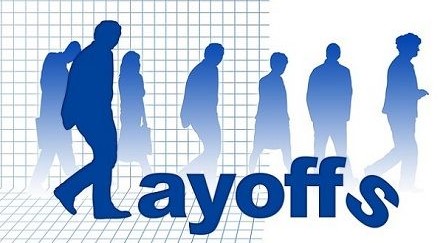Corporate Corruption and the HRM Function: Legal, Ethical, and Moral Perspectives
February 12, 2025
 How to Combat Stress, Burnout, Loneliness, and Low Productivity at the Workplace
How to Combat Stress, Burnout, Loneliness, and Low Productivity at the Workplace
The Problems of Demanding Workplaces Contemporary workplaces are very demanding in terms of the physical and mental toll they extract from the employees. With ever-increasing competition among businesses and scarce resources, organizations demand more from the employees who perceive it as asking too much for too less. Also, longer working hours, the need to be […]
 How to Engage Women Employees ?
How to Engage Women Employees ?
There has been a flurry of conferences, studies and researching on why women employees are likely to leave their companies earlier as compared to men employees. Why is the number of unhappy female employees growing? Why great leaders are unsuccessful in retaining women employees even after spending a lot of money, time and effort? Although […]
 Problems with Job Analysis
Problems with Job Analysis
No process can be entirely accurate and fully serves the purpose. Job analysis is no exception to it. The process involves a variety of methods, tools, plans and a lot of human effort. And where ‘people’ are involved, nothing can be 100 percent accurate. However, they may be appropriate considering various factors including organizational requirements, […]
 Objectives of Performance Management
Objectives of Performance Management
According to Lockett (1992), performance management aims at developing individuals with the required commitment and competencies for working towards the shared meaningful objectives within an organizational framework. Performance management frameworks are designed with the objective of improving both individual and organizational performance by identifying performance requirements, providing regular feedback and assisting the employees in their […]
 After Effects of Poor Employee Relationship Management
After Effects of Poor Employee Relationship Management
The relationship among the employees plays an important role in deciding the fate of the organization. Employees must respect each other and come to each other’s help whenever required and look forward towards achieving the organization’s targets. If the employees do not enjoy a healthy relationship among themselves, problems are bound to arise and ultimately […]
The term employee layoff is referred to as temporary separation of an employee from the employer. However, these days it is also used for permanent termination of an employee for business reasons.
According to section 2 of the Industrial Disputes Act, 1947, the employee layoff is the failure, inability or refusal of an employer to give employment to a worker who is present on the payrolls of the company but has not been retrenched. It may be for a definite period of time or indefinite time period or forever depending upon the ability of the employer. Once employers comes out of the financial crisis or becomes able to offer employment to the laid off employees, they are recalled by him or her for duty.
Employee layoff is usually undertaken to streamline organizational operations by reducing labor costs. The term downsizing, having a meaning similar to layoff is often used to eliminate the jobs so that company expenditures can be restructured.
However, there are many common reasons for temporary suspension or permanent termination of employees from their duty. These include shortage of raw material, power, accumulation of stocks, breakdown of machinery, ongoing construction, lack of resources, financial crisis, rightsizing, excess operating expenses, surplus overheads, mergers and acquisitions, job redesigning and streamlining organizational operations.
Downsizing or employee layoffs can have devastating effects on both suspended or terminated employees as well as those who survived.
Laid off employees may exhibit shock, anger, distrust, doubt, frustration and escapism.
Employee layoff, if not handled properly and carefully, may result into protests and disputes. In addition to it, it may worsen the already existing situations if not handled tactfully.

On the other hand, those who do not lose their jobs and survive during lay off, are in no better position. They lose the trust in their employer and start looking out for other opportunities. The whole process may leave serious psychological consequences on them. They will switch as soon as they get a chance if the organization is not able to maintain goodwill towards them.
It, in turn, hampers the productivity of the organization as employees who survived during layoff process start having bitter feelings and dissatisfaction.
Handling employee layoff is, certainly, the most difficult task for managers to handle. It is simply impossible to be in good books of all the employees. After all, it’s human nature. No one can remain same or unbiased towards everyone. In such a scenario, effective communication is the only key to handle employee cutbacks efficiently.
Communicating properly and clearly the reasons and approximate time period for layoff can prove to be very effective in handling the emotions of employees. It is good to separate from employees on a good note in order to maintain harmonious relations with them even after separation.
If employer is terminating the employees to cut down labor costs and streamline operations and expenses against their will, employees are entitled to receive unemployment benefits for a particular period of time. The workers who are laid off can claim for their compensatory amount for being terminated from their duty.
In some cases, employer is liable to pay monetary compensation to terminated employees for a period ranging from one to three months, according to the Industrial Disputes Act, 19 and company policy.
Employee Layoff is a very sensitive issue, thus, requires careful handling. Mishandling may result in employee protests, anger, strike or lock-out.
Your email address will not be published. Required fields are marked *